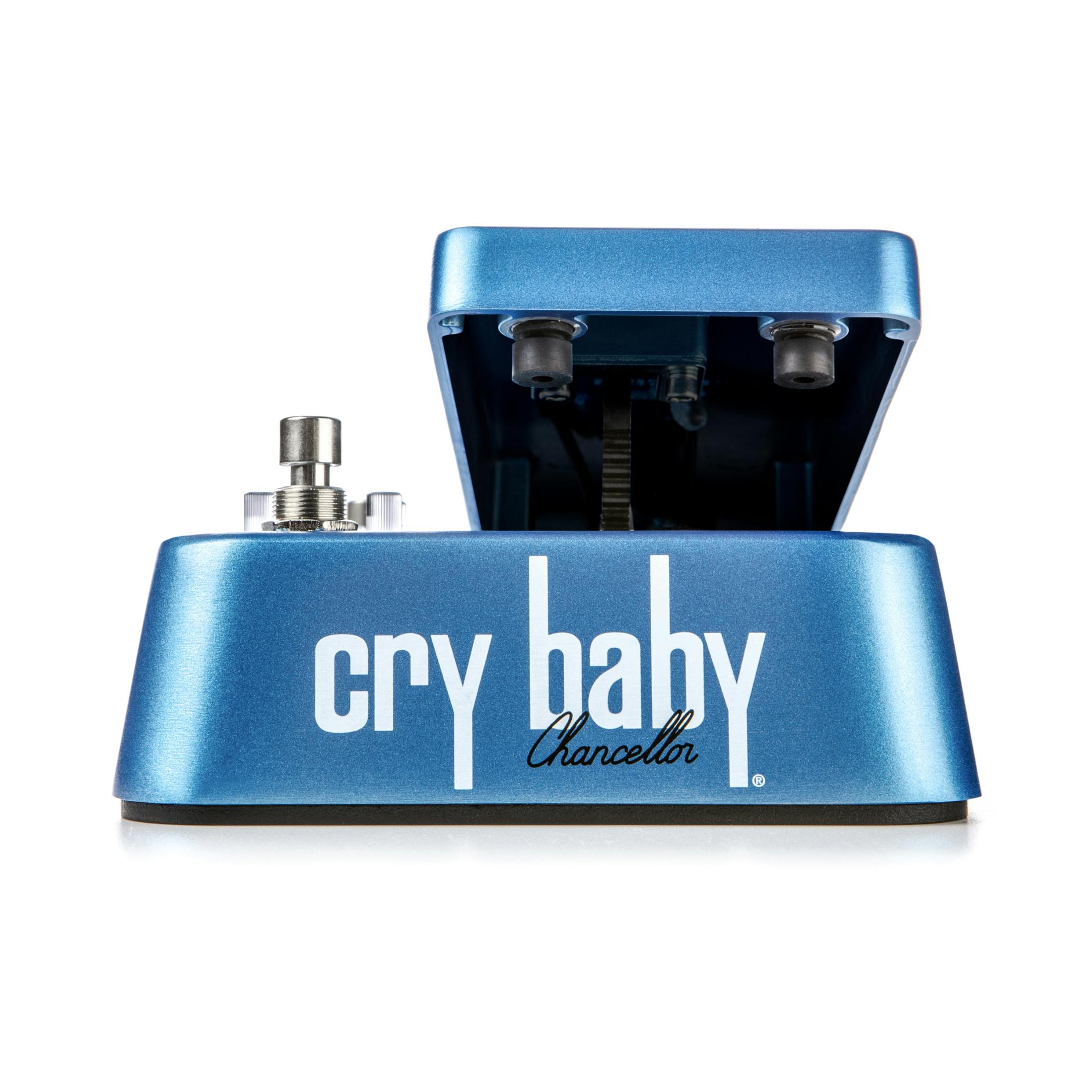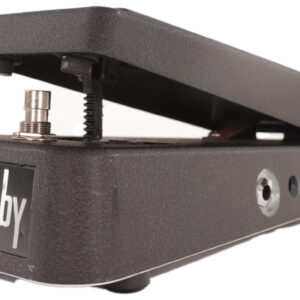Description
The Jim Dunlop JCT95 Justin Chancellor Signature Cry Baby Bass Wah, Fuzz & Filter Pedal is currently retailing at £339 and it is in stock. Available to be delivered to you by post direct (some charge may apply).The team at Just Pedals think that Jim Dunlop nailed it with the Jim Dunlop JCT95 Justin Chancellor Signature Cry Baby Bass Wah, Fuzz & Filter Pedal.
Justin Chancellor is a sonic pioneer. The musical backbone of his Grammy award-winning band Tool, Chancellor is recognised for his percussive bass playing, but is also lauded for his creative, effects-laden melodic parts that really take you on a trip! The Jim Dunlop JCT95 Justin Chancellor Cry Baby wah pedal brings three of his favourite effects together in a single housing — the fluid expressiveness of a custom mid-range filter, the bright aggression of a custom wah circuit, and the chainsaw grind of a vintage fuzz.
In short, this incredible tool (pun intended) is perfect for bassists who want to push the musical boundaries. Whether opening up soundscapes with chords and harmonics, or syncing up with a guitarist to perform arresting single-note unison runs — this pedal gives you plenty to play with!
Key Features
- 2 Wah Voices — 'U.K. Filter' and 'Wah' modes provide two tone-warpingly distinct variations on a theme.
- U.K. Filter Mode — Thick and throaty, designed to emulate the unique envelope-like filtering of the tone control on Justin's bass. When combined with the built-in fuzz, the U.K. Filter voice generates incredibly smooth, synth-line tones.
- Wah Mode — Brilliant, aggressive and lush. If you prefer a more traditional wah sound, this mode employs the classic red Fasel inductor and the circuitry of a modified Cry Baby Wah for a gnarlier sound with brilliant harmonics. It really cuts through with the fuzz engaged!
- Wah Select Footswitch — Move between the two wah voices at any time, with separate Volume and Q controls giving you ultimate control.
- Custom Circuitry — In both modes, the pedal maintains the thickness and heft of your low-end by boosting your clean signal at 400Hz and blending it with the effect signal at the beginning of the rocker’s sweep!
- Vintage Fuzz Circuit — Based on Justin’s go-to fuzz; a ferocious device of vintage UK origin. Has a tighter focus than most fuzzes, while retaining much of the bass signal's punch. By default, you’ll only hear the fuzz when using the rocker pedal, but you can kick the switch on the side to run it independently.
We have new and used Jim Dunlop musical equipment available on our website for fast direct delivery from sellers across the UK & Europe.
Dunlop Manufacturing is a renowned company specializing in musical instrument accessories, particularly known for its guitar effects pedals. They produce a wide range of pedals catering to various guitarists’ needs, from classic effects to innovative designs.
Some popular Dunlop guitar pedals include:
Cry Baby Wah: Perhaps their most iconic pedal, the Cry Baby Wah, has been used by countless guitarists. It’s a versatile pedal that modulates the guitar’s sound to create the famous “wah” effect.
MXR Phase 90: This is a classic phaser pedal known for its simplicity and distinctive swirling sound. It’s been used by numerous guitarists across different genres.
MXR Carbon Copy Analog Delay: A popular delay pedal offering warm, analog-style delay tones. It’s loved for its simplicity and lush, rich sound.
MXR Dyna Comp Compressor: A compressor pedal that evens out the dynamics of your guitar playing, providing sustain and smoothness to the sound.
Dunlop Fuzz Face: A legendary fuzz pedal originally produced in the ’60s. It’s been reissued and updated over the years, offering that classic fuzz tone.
MXR EVH Phase 90: This pedal was designed in collaboration with Eddie Van Halen, featuring his preferred phaser settings.
Dunlop Echoplex Delay: Based on the legendary EP-3 tape delay unit, this pedal offers a rich, warm tape echo emulation.
These pedals are just a few examples from Dunlop’s extensive lineup. They are known for their reliability, sound quality, and often iconic status among guitarists. Different guitarists may prefer specific pedals based on their playing style and the sound they’re aiming to achieve. It’s always a good idea to try out pedals in person or listen to demos to find the right one for your preferences.
In the realm of guitar effects, “bass” pedals are designed specifically for bass guitars, enhancing their low-end frequencies and allowing bassists to shape their tone and explore new sonic possibilities. These pedals cater to the unique characteristics of the bass guitar and provide various effects to modify its sound. For instance, overdrive and distortion pedals add gain and saturation, giving the bass a gritty or distorted tone. Compression pedals help even out dynamics by smoothing out the volume of loud and soft notes, resulting in a consistent and punchy sound. EQ pedals enable bassists to sculpt their tone by boosting or cutting specific frequencies, allowing them to emphasize certain parts of the sound or compensate for room acoustics.
Other popular bass effects include envelope filters, which produce dynamic filter sweeps in response to playing dynamics, adding rhythmic groove to bass lines. Octave pedals generate harmonies one or two octaves below the original note, creating a fuller and more powerful sound. Modulation effects like chorus, flanger, and phaser add depth and movement by modulating the pitch or phase, creating swirling textures and enhancing the overall presence of the bass line. Lastly, delay and reverb pedals introduce ambience and spatial depth, adding echoes and reflections that enhance the sense of space in music. These diverse effects allow bassists to expand their sonic palette and express their creativity in numerous ways.
A filter pedal is used to shape and modify an instrument’s tone by emphasizing or cutting specific frequency ranges, often creating unique sounds or effects. Filter pedals typically offer controls like cutoff frequency, resonance, and sensitivity to allow musicians to sculpt their tone, adding characteristics such as warmth, brightness, or subtle movement to their sound.
There are several types of filter pedals, including wah pedals, which are essentially a type of filter that sweeps through frequencies in response to the player’s foot movement, and envelope filters, which react to the dynamics of the playing (e.g., picking intensity) to create funky, automatic filtering effects. Filter pedals are widely used in genres like funk, rock, and electronic music, with popular brands like Electro-Harmonix, Moogerfooger, and MXR offering high-quality filter pedals that bring creativity and sonic exploration to a musician’s setup.
Fuzz is a type of guitar effect that distorts the signal in a more extreme and saturated way than typical overdrive or distortion pedals. It creates a thick, woolly tone with a characteristic “fuzzy” sound, often associated with the classic rock and psychedelic eras. Fuzz pedals work by clipping the waveform of the signal at a much higher level, resulting in a crunchy, sometimes harsh sound that has a distinctive bite and sustain.
Fuzz pedals can vary in intensity and tone, with some offering more subtle, warm fuzz and others creating a more aggressive, raspy sound. The controls typically include fuzz, tone, and volume, allowing players to shape the effect to suit their preferences. Classic fuzz pedals like the Electro-Harmonix Big Muff Pi and the Dallas Arbiter Fuzz Face have become iconic for their bold, powerful sound, making fuzz a staple for genres like rock, stoner metal, and experimental music.
Just Pedals is a new Guitar Effect Pedals Marketplace – We feature new and used Guitar Effect pedals from different sellers, to purchase online from the UK.
Signature pedals are special editions of guitar effects designed in collaboration with famous musicians or to replicate the unique sound of a particular artist. These pedals typically feature custom modifications, settings, or circuit designs that reflect the player’s iconic tone, offering fans and musicians a way to capture that signature sound in their own setup.
Signature pedals are often developed with the input of the artist to ensure the pedal closely matches their live or recorded tone. Examples include the Joe Bonamassa Fuzz by Electro-Harmonix, designed to deliver the blues-rock legend’s distinctive fuzzy tone, and the John Petrucci Dreamscape by MXR, which is tailored to the Dream Theater guitarist’s complex soundscapes. These pedals not only provide a specific tone but also offer users the chance to access the sounds of their favourite artists in a compact and reliable format.
A wah pedal is a dynamic filter effect that sweeps through frequencies to create a vocal-like “wah” sound. It works by adjusting the emphasis on different frequencies as the pedal is rocked back and forth, allowing guitarists to create expressive, rhythmic tones. Wah pedals are widely used in funk, rock, blues, and metal, with players like Jimi Hendrix, Eric Clapton, and Slash making them iconic. Some wah pedals have adjustable Q controls, auto-wah functions, or switchless activation. Popular models include the Dunlop Cry Baby, Vox V847, and Morley Bad Horsie, each offering unique tonal characteristics.
Just the latest videos
Just related products
£338.17
Combining three of Justin Chancellor's epic effects into a single pedal filter, inspired by the tone circuitry of his bass, sounds thick and voice-like. Modified Cry Baby Wah sounds lush and aggressive vintage UK style that can either be paired with …
read more
15% Off £104.99 £89.00
Heavy die cast construction for years of reliability The original crybaby wah wah pedal that has been a standard in the world of music since its introduction in the late 1960's 100k ohm hot potz potentiometer that allows for that quick, abrupt wah so…
read more
15% Off £197.99 £167.50
Wah Wah Effekte Gitarren We emphasise a balanced combination of careful workmanship and selected materials. OUR GOAL – Your satisfaction is our top priority and takes centre stage.
£172.99
Effect Type: Wah-Wah Technology: Analog Mono/ Stereo: Mono In, Mono Out True Bypass: Yes Country of Origin: Made in USA
£614.33
This custom Cry Baby Wah combines three of Justin Chancellor's favorite ways to explore tones and craft soundscapes—filter, wah, and fuzz. The Justin Chancellor Cry Baby Wah features U.K. Filter and Wah modes, two tone-warpingly distinct variations o…
read more






































